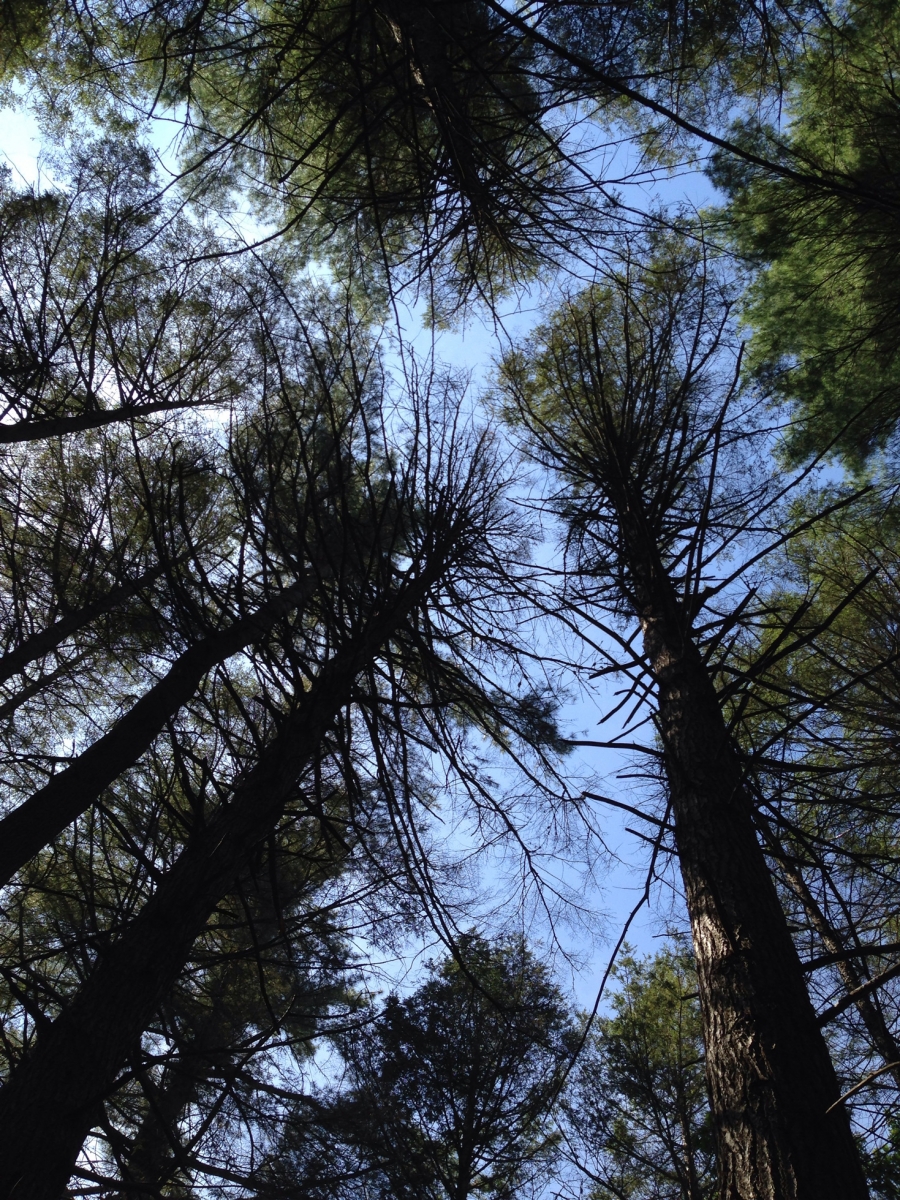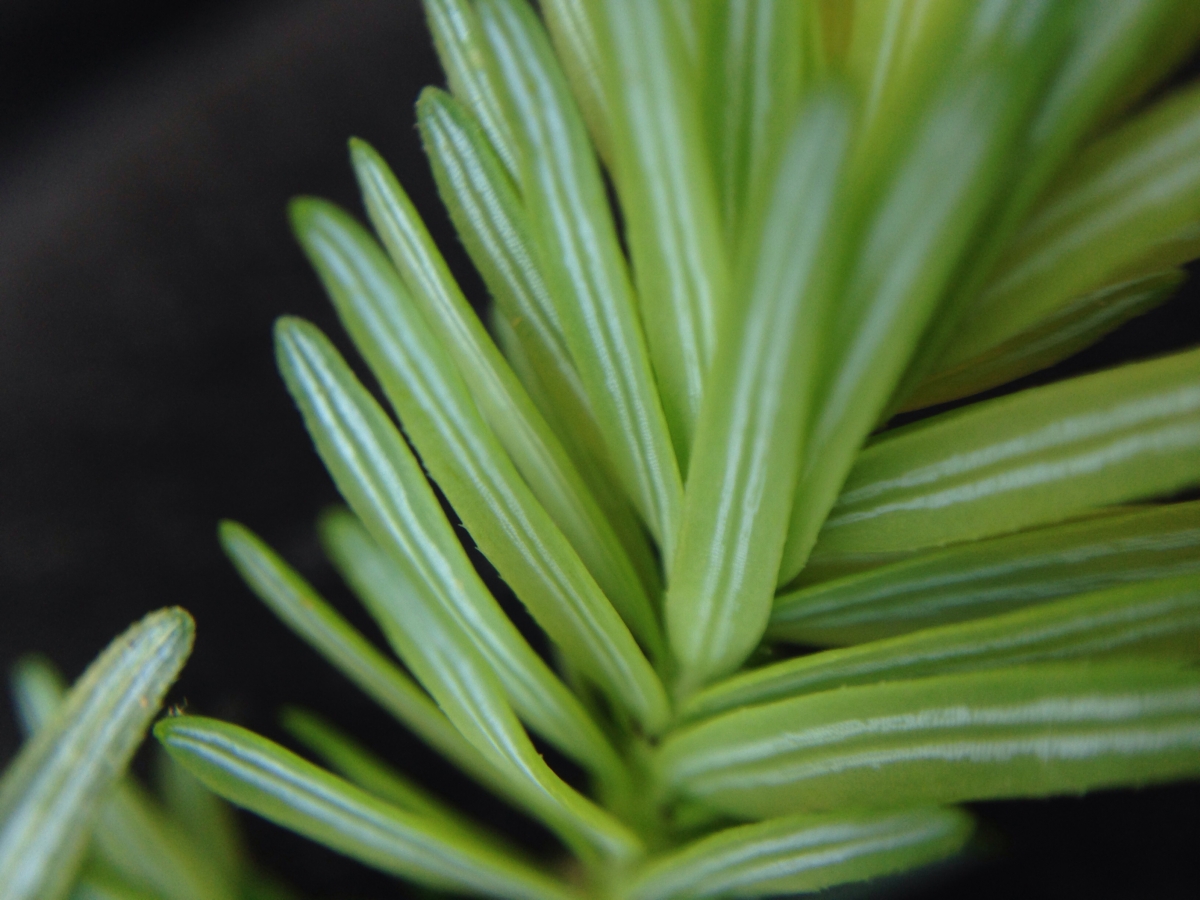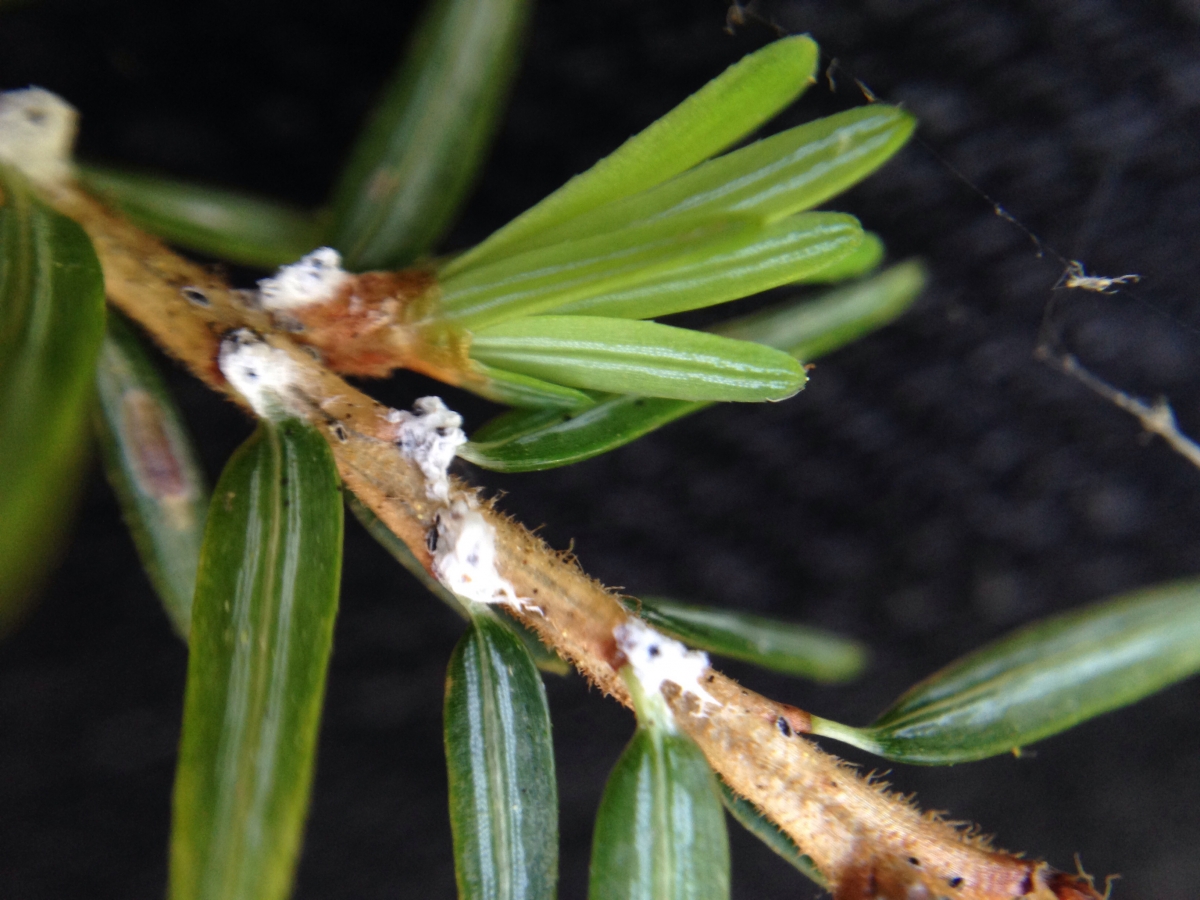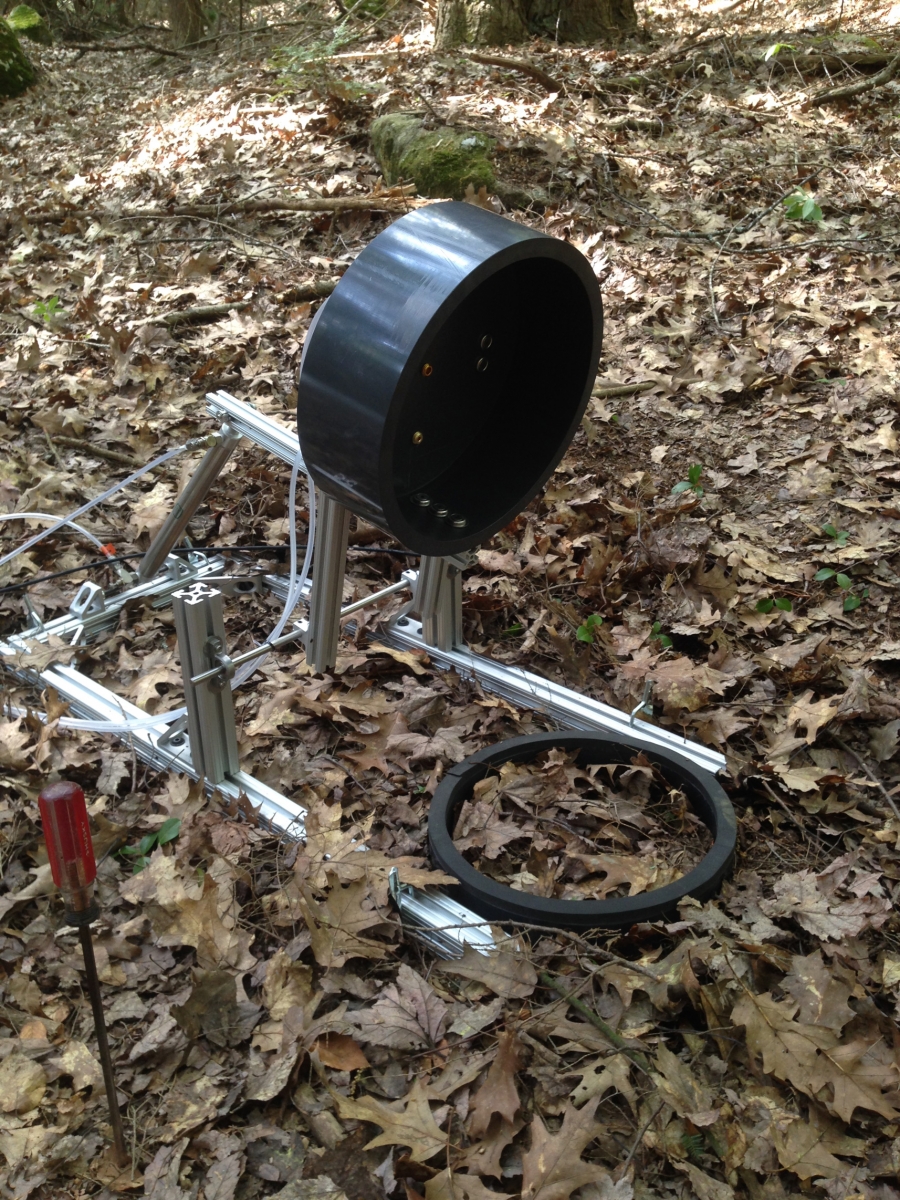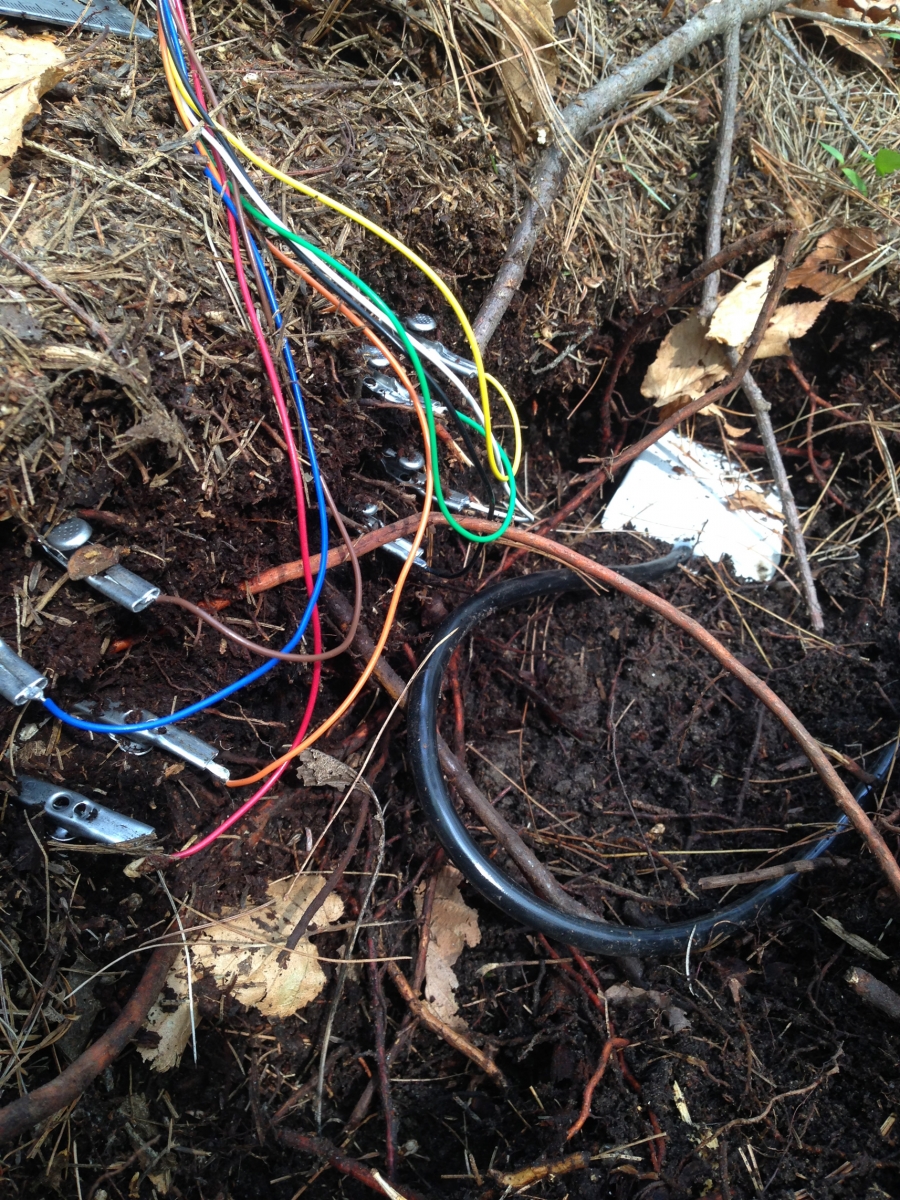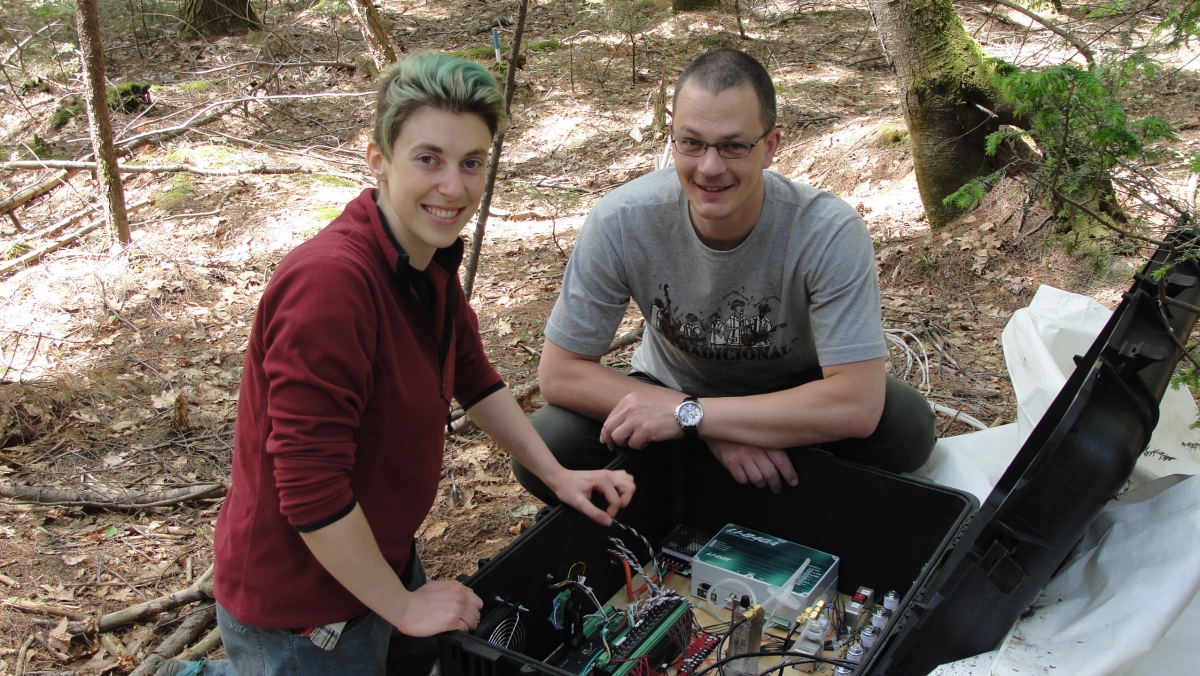You are here
How do I love thee, soil? Let me count thy roots!
The next time you find yourself in a hemlock forest, take moment to notice what is around you. Take your gaze skyward to the thick and verdant canopy or downwards to the dim and dappled light that dances in playful patterns across the thick layer of needles carpeting the forest floor. Close your eyes and listen for the myriad of birds and insects that call this forest home or take a deep breath and inhale the rich and distinctive smell of the forest-- the light scent of newly grown needles highlighting the deeper earthy smell of the soil. It is perhaps one of my favorite scenes to come across, but hemlock forests aren’t only aesthetically pleasing. They also support many species of mammals, birds, ants, fish, and amphibians, some of which rely entirely on these forests for the unique habitat and microclimate that they provide.
Now step forward five or ten years in time. The hemlocks are likely dead or dying, the canopy thinned. Black birch saplings and herbaceous vegetation may have taken advantage of the newfound sunlight and sprouted where growth was formerly inhibited by the deep shade and acidic soils. The previously uniform blanket of hemlock needles now features leaves from other species, which, as they decompose and become incorporated into the earth, markedly change the soil chemistry and carbon balance of the forest. This is the future of hemlock stands, due to an insect no larger than the head of a pin--the hemlock woolly adelgid.
The hemlock woolly adelgid is an invasive insect that originally hails from Japan, was introduced into the United States in the 1950s, and has now spread along the Atlantic coast. These tiny insects attach to the base of hemlock needles and devour the sugars that the tree photosynthesizes. The hemlock has no defense against this attack and once infested will ultimately succumb to the adelgid’s appetite. The adelgid is vulnerable to cold weather, but with the progression of climate change, their range is slowly creeping north and imperiling the future of New England’s hemlock forests.
The loss of the iconic Eastern Hemlock from New England’s forests will drastically change the landscape. However, my project does not focus on the trees themselves, but what is underneath them--the soil and how it ‘breathes’. It may not look like much is happening down in the dirt, but there are actually many processes that are constantly occurring in the soil. In particular, we are interested in what happens to carbon and how it is stored and released from the earth.
Globally, soil is one of the most important places where carbon is stored. This carbon primarily enters the soil through decomposing leaf litter, animal remains, or dead roots. The amount of time this carbon remains in the soil depends on how quickly it is consumed by the microbes and other detritivores that are breaking it down. However, much like humans, these critters also need to breathe and emit carbon dioxide. In addition, plant and tree roots also exhale carbon dioxide in the process of growing and using the sugars that they have produced during photosynthesis. While the contribution of carbon dioxide of a single microbe or a single root might not amount to much on its own, the vast number and large area that soil covers means that any shifts in temperature, moisture, or chemistry can drastically change the carbon balance of the entire earth.
To measure this exhalation of the soil and how it will change with the death of the hemlocks, we have set up two automated systems--one in an infested forest where the effects of the adelgid are already quite noticeable, and one where the adelgid is not present yet.
Each system consists of six clam-shaped chambers that take turns opening and closing. While the chambers are closed, carbon dioxide accumulates from the soil and the system measures the concentration, which ultimately allows us to calculate the rate of respiration. We also automatically collect data on temperature and soil moisture, two factors that significantly influence soil respiration. This data is stored on a USB drive at the sites and one of my weekly tasks is to download the data that the box has been collecting. After returning from the field, I will look through each set of raw data, then run some analyses to see any patterns that are occurring.
It only takes a few minutes to take the USB drive and copy the files onto my laptop. After that, I make sure the chambers are still airtight, no debris has fallen on them, and they open and close properly. As we are only interested in respiration that occurs from the soil and not that from aboveground plants, I also pull any new sprouts that I see from within the chamber.
We are also looking to see how the amount of carbon in the forest soil and where it is stored changes over the infestation. For this, we collect soil samples from different plots in the forest, pluck each individual root out and determine whether they are live or dead, and find the carbon content of the soils themselves. If you have ever wondered how many roots are in the forest, I might say that it is perhaps comparable to the number of stars in the sky or drops of water in a pond-- that is to say, ultimately finite, but seemingly endless. As we have many, many, samples to sort, I am very glad that Zach and Grace, two students working in Dr. Finzi’s lab at Boston University, do much of this work.
While research is what occupies much of my time, there is still ample opportunity for other activities. The days here are interspersed with epic after-dinner badminton tournaments (in which nobody keeps score, there are no rules or out of bounds, and players come and go as they wish), Tim’s fabulous cooking (I would particularly recommend the tofu curry and roasted cauliflower), and weekend hiking trips (where it is entirely common for the whole group to stop and become highly distracted by a particularly interesting tree).
I absolutely love that I get to work outside collecting soil samples or laying out plots, the thrill that comes with visualizing the data and searching for patterns, and the understanding that my work here this summer is contributing to understanding the carbon dynamics of the forest. Despite the fact that the work can be difficult and challenging at times, there is nothing I would rather be spending my summer doing.


